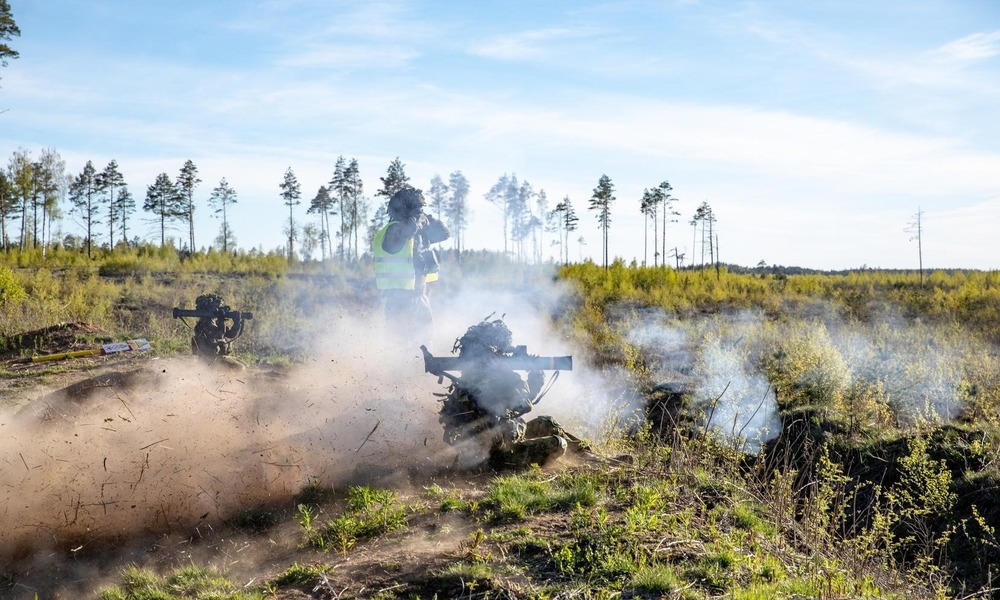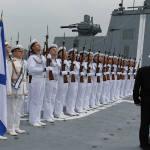BALTIC MONITOR
Date: 17 May 2019
Spring Storm over Russian Border: NATO Demonstrates its Military Power
Spring Storm 2019, a large-scale military exercise held in the easternmost NATO bastion, has just come to an end. The exercise has demonstrated that, out of all NATO member states, Estonia is the country most threatened by Russia simply due to its geographic location. The exercise has also shown that by operating on the Estonian territory, NATO could seriously restrict Russian activity in the Baltic Sea and even pose a major threat to the city of Saint Petersburg (the exercise was held only 150 kilometres from the former Russian capital). Therefore, it is not surprising that ever since the USA decided to withdraw from the Intermediate-Range Nuclear Forces Treaty (the INF Treaty), the Russians have talked a great deal about a potential missile threat coming from Estonia.

Spring Storm has been organised by the Estonian military since 2003. Estonia’s allied forces have been taking part in the military training since 2007. This year, over 9,000 soldiers from over a dozen countries participated in the 16th edition of Spring Storm (Estonian: Kevadtorm). The exercise started in late April and officially ended on May 17, though the most active phase of the training was between May 2 and May 10. The main goal of the exercise was to improve the process of synchronisation of combat plans, combat readiness and cooperation between leaders. Regular armed fights were simulated during the key phase of the manoeuvres (from the morning of May 6 to the evening of May 9). The following branches of the Estonian military took part in the exercise: the Estonian Land Forces, the Estonian Air Force and the Estonian Navy, including the 1st Infantry Brigade, the 2nd Infantry Brigade, the Headquarters Support and the Estonian Defence League (Estonian: Kaitseliit), which is a voluntary paramilitary national defence organisation. They were joined by the forces of the NATO battalion battle group stationed in Estonia as well as troops and military equipment from both allied and partner countries that were deployed here specially for the time of the exercise. The NATO member states that arrived in Estonia were the following: the USA, the UK, Belgium, France, Germany, Canada, Poland, Lithuania and Latvia. The countries outside NATO were: Finland, Georgia and Ukraine. As far as the Polish contribution to the exercise is concerned, the Naval Missile Unit equipped with Norwegian-produced NSM (Naval Strike Missile) anti-ship missiles came to Estonia. Apart from that, Polish Su-22 fighter-bombers were also sent to take part in the exercise.
Support Us
If content prepared by Warsaw Institute team is useful for you, please support our actions. Donations from private persons are necessary for the continuation of our mission.
The main training ground were the counties of Lääne-Viru and Ida-Viru in the north-eastern part of the country (right after Tallinn, this is the place where the majority of Russians live); however, some manoeuvres were also carried out in the counties of Harju and Jõgeva. Most of the operations were conducted on the territory of the boroughs of Alutaguse, Lüganuse, Jõhvi, Toila, Vinni and Viru-Nigula, and in the towns of Kohtla-Järve, Sillamäe and Narva-Jõesuu. It is worth noting that the three above-mentioned towns have the highest Russian-speaking population rates in the country. In Sillamäe, nearly 90% of the population is Russian. The areas where the exercise took place were, over a decade ago, the arena of the largest, right after those in Tallinn, series of riots provoked by Moscow, which arranged the entire chain of events and then incited the Russian-speaking population to protest against the Estonian authorities (the relocation of the Bronze Soldier of Tallinn, a Soviet World War II war memorial, was used as the pretext for widespread rioting). There is no doubt that the choice of the training ground was not accidental. After all, the NATO soldiers were carrying out combat manoeuvres just 150 kilometres from Saint Petersburg. The presence of the Polish NSM missiles with a range of up to 200 kilometres in Estonia must surely have been a major cause for concern for the Russian side. This shows that the Alliance has the capacity to build – at least on water – a A2/AD zone in its soft underbelly, right where the Gulf of Finland meets with the Baltic Sea. This means a potential possibility of trapping the Russians in their ports in Leningrad Oblast. It can be then assumed that in the event of an armed conflict, the first most important task of the Russian army will be the seizure of Estonia in the fastest way possible. Without having control over the northern coast of this country and the Estonian islands, it will not be possible for Russia to freely operate its naval forces in the Baltic Sea water body.
All texts published by the Warsaw Institute Foundation may be disseminated on the condition that their origin is credited. Images may not be used without permission.














